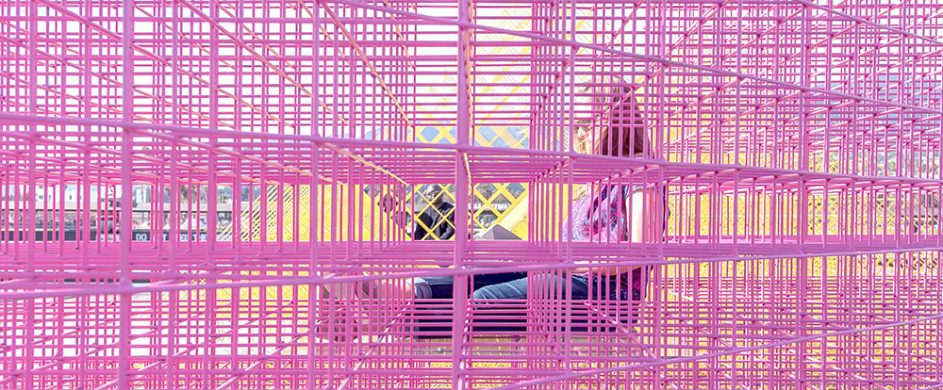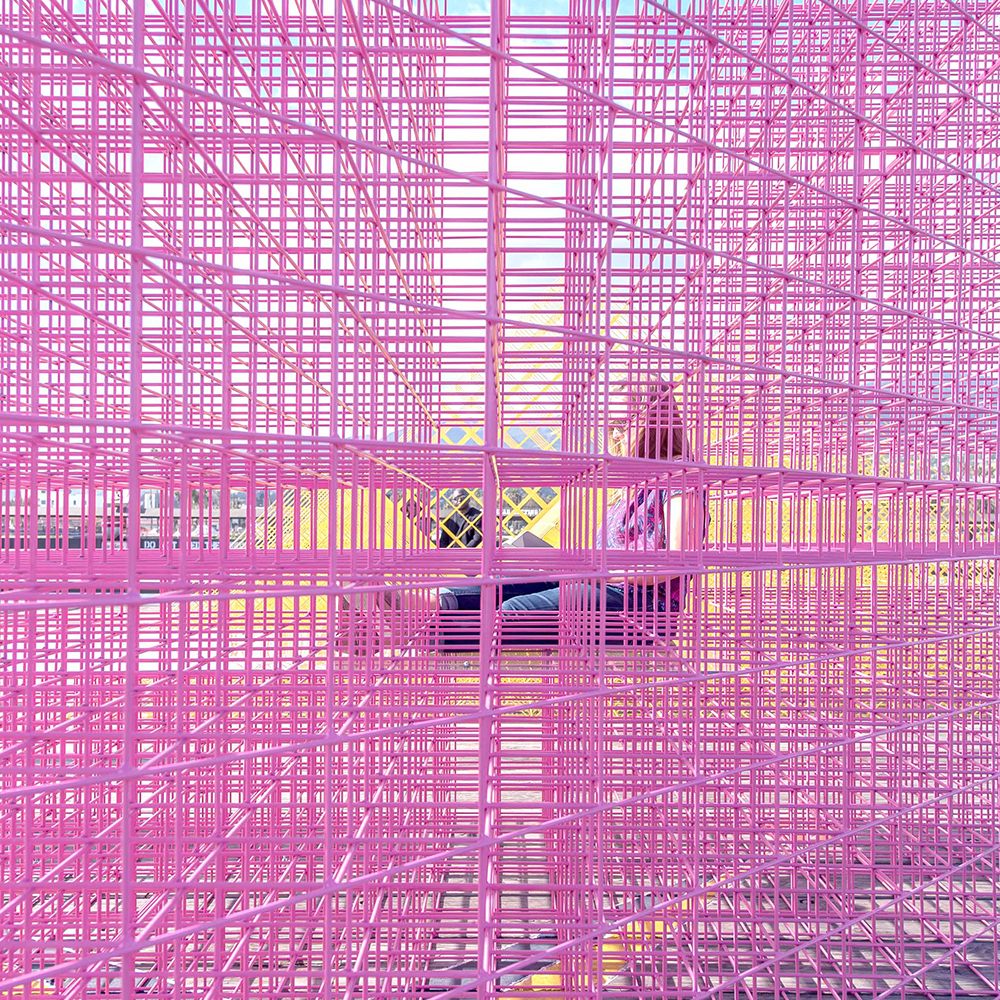Selected as the winning design for the International Pavilion Competition organized by the Museum of Contemporary Art Santa Barbara, this vibrant installation called “Runaway” is colouring the boardwalks of California’s Santa Barbara waterfront from March 2017. It has been designed by SPORTS (a collaboration between Greg Corso and Molly Hunker) and will be moved to six different sites in at least three different neighborhoods during its 2-year life-span in Santa Barbara.
///
Selezionato come progetto vincitore per il Concorso Internazionale del Padiglione organizzato dal Museo d’Arte Contemporanea di Santa Barbara, questa vivace installazione chiamata “Runaway” sta colorando le passerelle del lungomare di Santa Barbara (California, USA) dal marzo 2017. Essa è stata progettata da SPORTS (una collaborazione tra Greg Corso e Molly Hunker) e sarà spostato in sei differenti siti localizzati in tre quartieri durante i suoi due anni di vita a Santa Barbara.
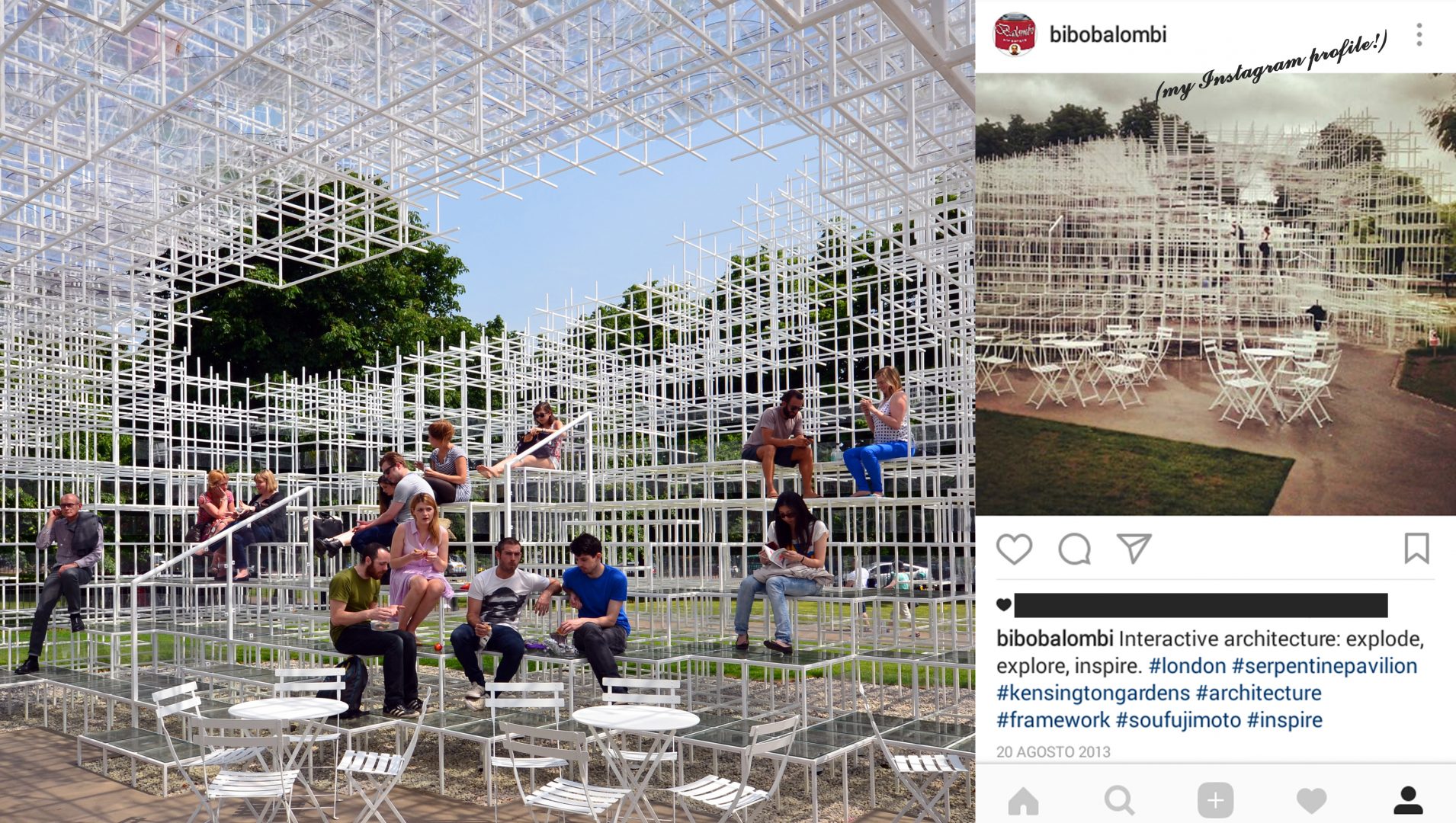
Reminding immediatly the Serpentine Gallery Pavilion (temporary structure placed in Kensington Gardens, London, coming from a contest that take place every year) designed in 2013 by Sou Fujimoto, Runaway is composed by three modular objects made in a wireframe 3d style cage of thin steel rods, which can be freely orientated to adapt them to different locations and uses. The installation invites people to view and interact with it and its surroundings from a new point of view, encouraging citizens, tourists and artists to consider how contemporary art can redesign and put new functions into public spaces.
///
Facendo ricordare immediatamente il Serpentine Gallery Pavilion (struttura temporanea collocata a Kensington Gardens, Londra, proveniente da un concorso che si svolge ogni anno) progettato nel 2013 da Sou Fujimoto, Runaway è composta da tre moduli realizzati con una gabbia in sottili tubolari d’acciaio che possono essere liberamente orientati per adattarli a locations ed usi diversi. L’installazione invita le persone ad interagire con essa ed il suo ambiente circostante da un nuovo punto di vista, incoraggiando cittadini, turisti e artisti a considerare come l’arte contemporanea possa ridisegnare e mettere nuove funzioni negli spazi pubblici.
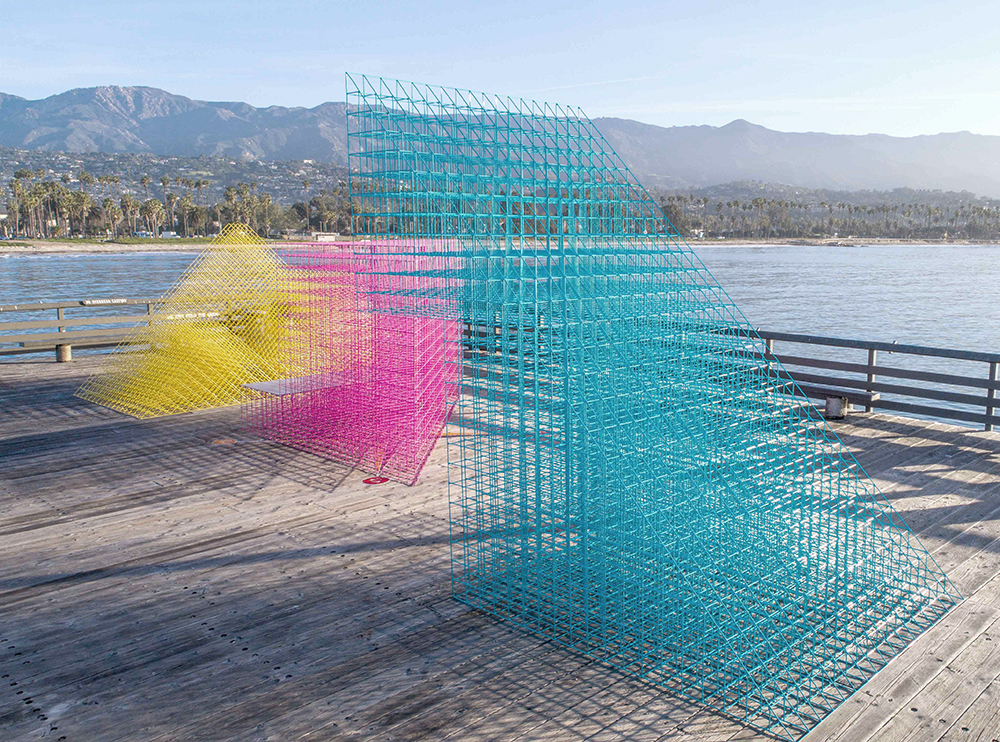

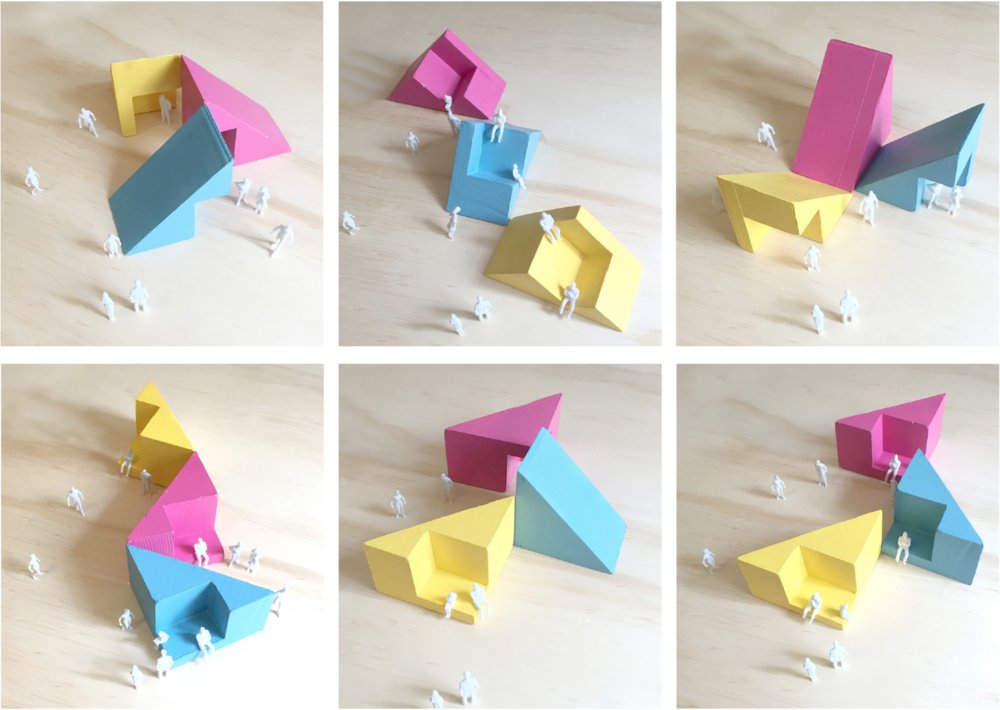
In some orientations, the “matrix object” (as described by its authors) acts as a dappled-shade structure, while in other ones it can act as a wall, a loungescape, a bench, or a performance stage. While the fully “interior” space of the pavilion is limited (it is basically an open spatial composition), the tall structures cast shadows at most times of the day, providing a patterned partial-shade in the spaces between the structures. In this way, the project provides a variety of shading conditions that allow for greater engagement and expanded use. Once finished with a series of brightly-colored paints (cyan, magenta, yellow), the thousands of linear elements within each of the objects emphasizes a thick and saturated “haze”.
///
In alcuni orientamenti, l’oggetto “matrice” (come descritto dai suoi autori) agisce come una struttura dalle tonalità maculate, mentre in altri può agire come un muro, uno spazio di aggregazione all’aperto, una panchina o addirittura come un palco. Mentre lo spazio “interno” dell’installazione è limitato (è fondamentalmente una composizione spaziale aperta), le alte strutture creano un’ombreggiatura parzialmente modellata dagli spazi delle strutture per gran parte della giornata. In questo modo, il progetto fornisce una serie variegata di tipologie differenti di ombreggiatura che consentono un maggiore impegno e un utilizzo più ampio. Una volta dipinto con una serie di vernici colorate (ciano, magenta, giallo), le migliaia di elementi lineari all’interno di ognuno degli oggetti sottolineano una “foschia” spessa e satura.
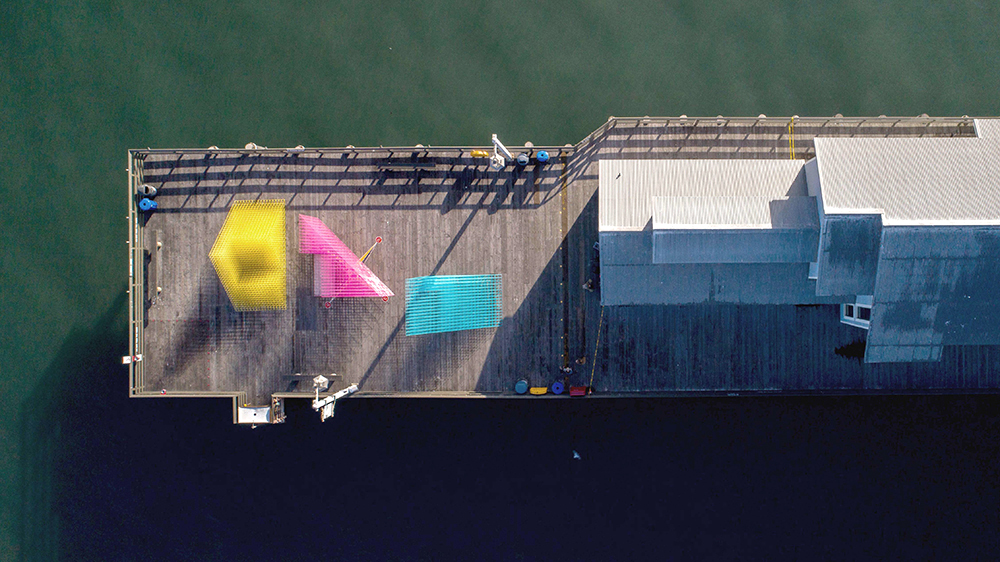
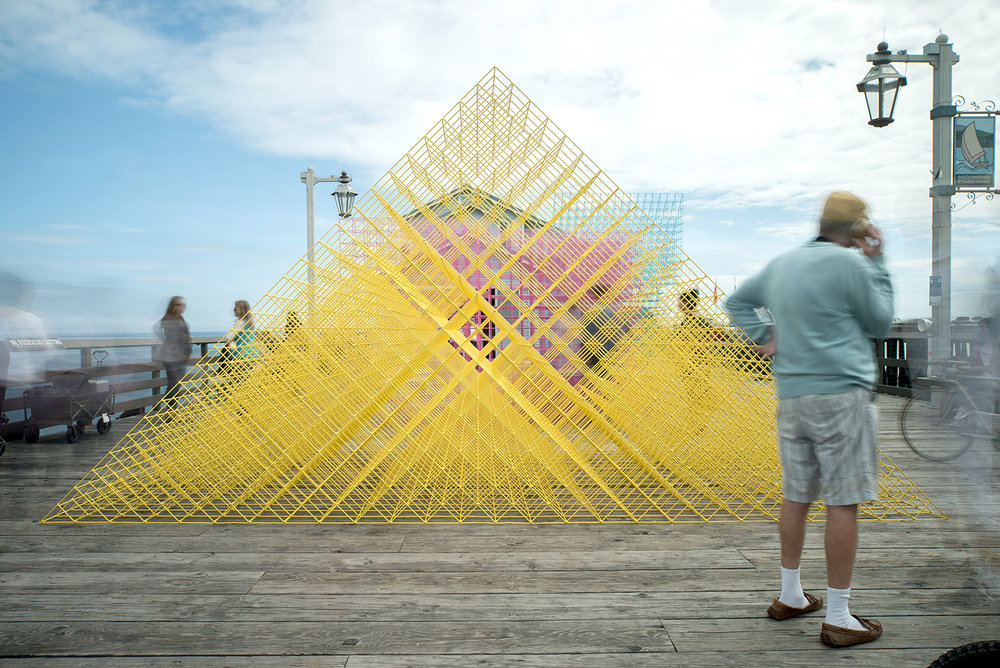
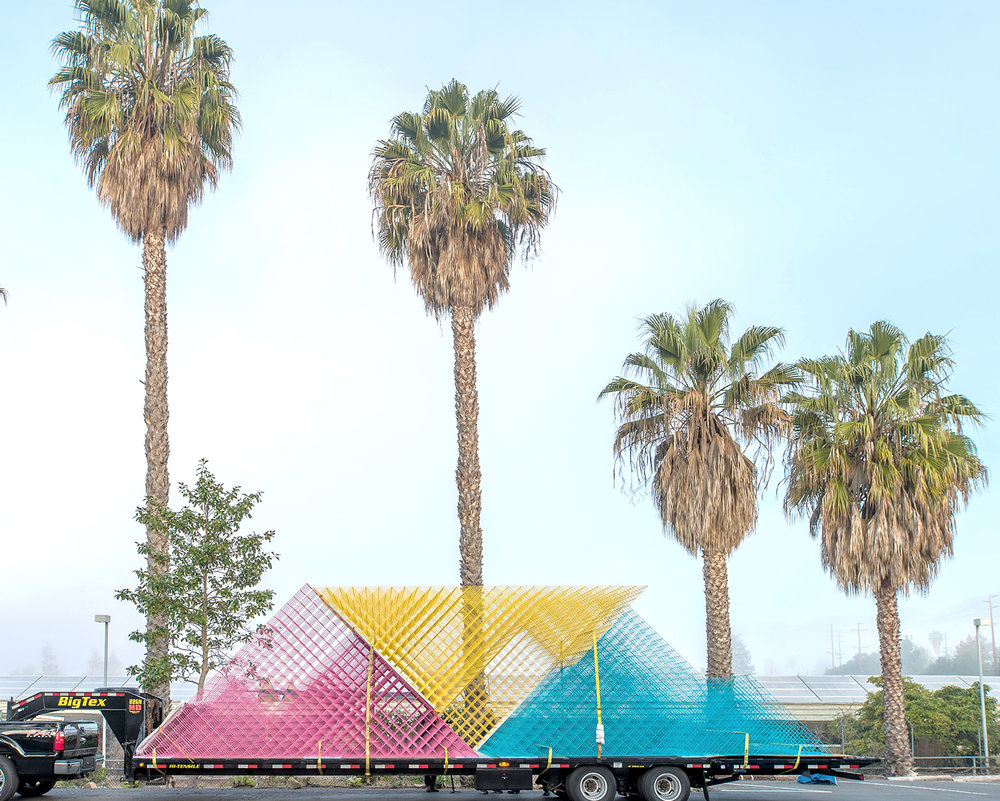
Images courtesy of SPORTS

